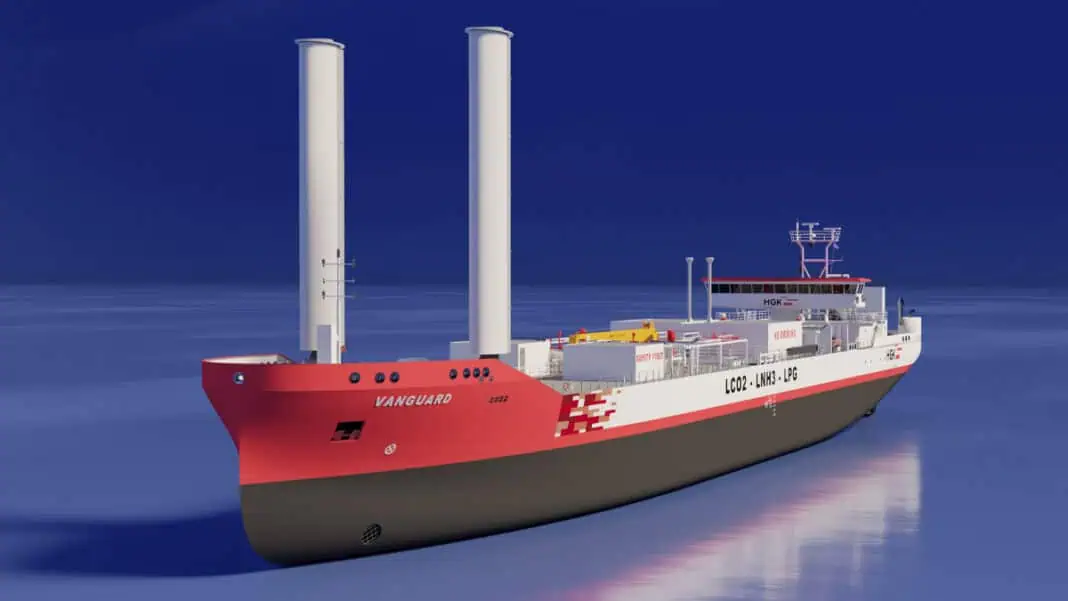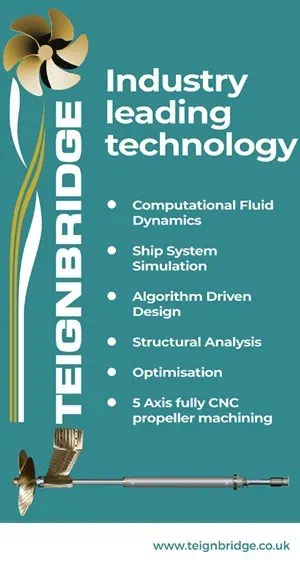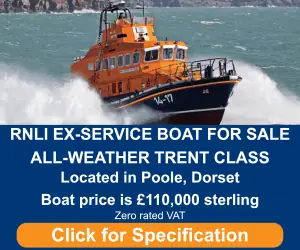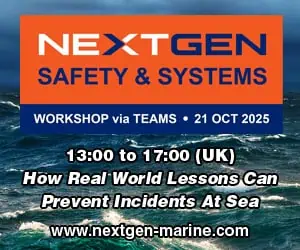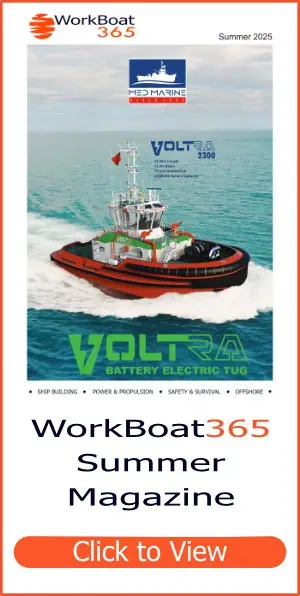HGK Shipping has designed a new kind of river-going coastal vessel in order to meet the requirements of industry in an increasingly hydrogen-based economy. Using the “Vanguard” project name, the continent’s largest inland waterway shipping company has designed the first river-seagoing gas tanker in Europe to transport cold liquefied ammonia (NH3) and liquefied CO2 (LCO2).
The “Vanguard” gas tanker is 125 metres long and 17.50 metres wide. Among other things, it is able to transport cold liquefied ammonia and liquefied carbon dioxide in its tanks. The extremely modern ship designed by HGK Shipping will not, however, just travel along rivers, but the “Vanguard” can also operate in European coastal waters and beyond. As there is no need to tranship the cargo between different modes of transport, this transport solution creates huge value added. This both applies to planned transport operations to supply hydrogen from Spain and Portugal, for example, but also to transport the CO2 that is expelled at the designated offshore fields, which are often located in the North Sea.
In order to make the transport operations as sustainable and resource-efficient as possible, a Wind Assisted Propulsion System (WAPS), a kind of sail, supports the diesel-electric “future fuel-ready” drive system. The enormous experience gained from other HGK Shipping designs for optimising operations in shallow waters has also been integrated in the “Vanguard” concept.
Steffen Bauer, the CEO of HGK Shipping, contextualises the innovative ship design in his plans for the company’s development. “The increasing process of decarbonisation of production processes is changing flows of goods. This is then opening up opportunities for our sector and for HGK Shipping to offer the economy new transport solutions that are available at short notice. The ‘Vanguard’ offers industry additional capacity to safely and sustainably transport liquefied ammonia and carbon dioxide from Scandinavia as far as the Iberian Peninsula and use the seaports as gateways to the network of European inland waterways.”
“The river Rhine in particular, the upper regions of which will be navigable for the ‘Vanguard’,offers an efficient alternative for pipeline structures, which either don’t exist or cannot be builtin the short term, for industries that have a strong presence on this river,” the HGK Shipping CEO says. HGK Shipping is therefore repeatedly setting new standards in ship design for inland waterway shipping from a logistical point of view in order to help support the “European Green Deal” with its planned switch of production processes, which includes using “green” ammonia.
“The newly designed river-seagoing gas tanker and the concept for other successors to ‘Vanguard’, which will be planned in line with customers’ requirements, fully exploit the technical possibilities for a smooth crossover from coastal waters and the inland waterway system further inland in the best possible way,” says Wolfgang Nowak, the Managing Director of the HGK Shipping , Amadeus, which is responsible for this business. “First of all,preventing any stop at the seaports reduces the risks associated with transhipment and, secondly, it offers our customers savings potential in terms of time and costs.” Amadeus hasbeen using the benefits of coastal vessels in the HGK Shipping cosmos for this purpose for aquarter of a century.
The “Pioneer“ project, which was announced in April 2024, and now the “Vanguard” project complement each other according to the plans to use them on the different waterways and each enable large transport volumes. The underlying ship concepts support industry when removing residual carbon dioxide, which is emitted and collected in liquid form as LCO2 from the different production processes. With the help of the “Carbon Capture and Storage“ (CCS)and the “Carbon Capture and Utilization” (CCU) procedures, it is possible to prevent CO2 emissions or make further use of them in chemical processes. The second important field of use for these newly developed gas tankers is to deliver the hydrogen derivative ammonia for further processing, so-called cracking of NH3, in order to supply the markets with sustainable,green energy.



